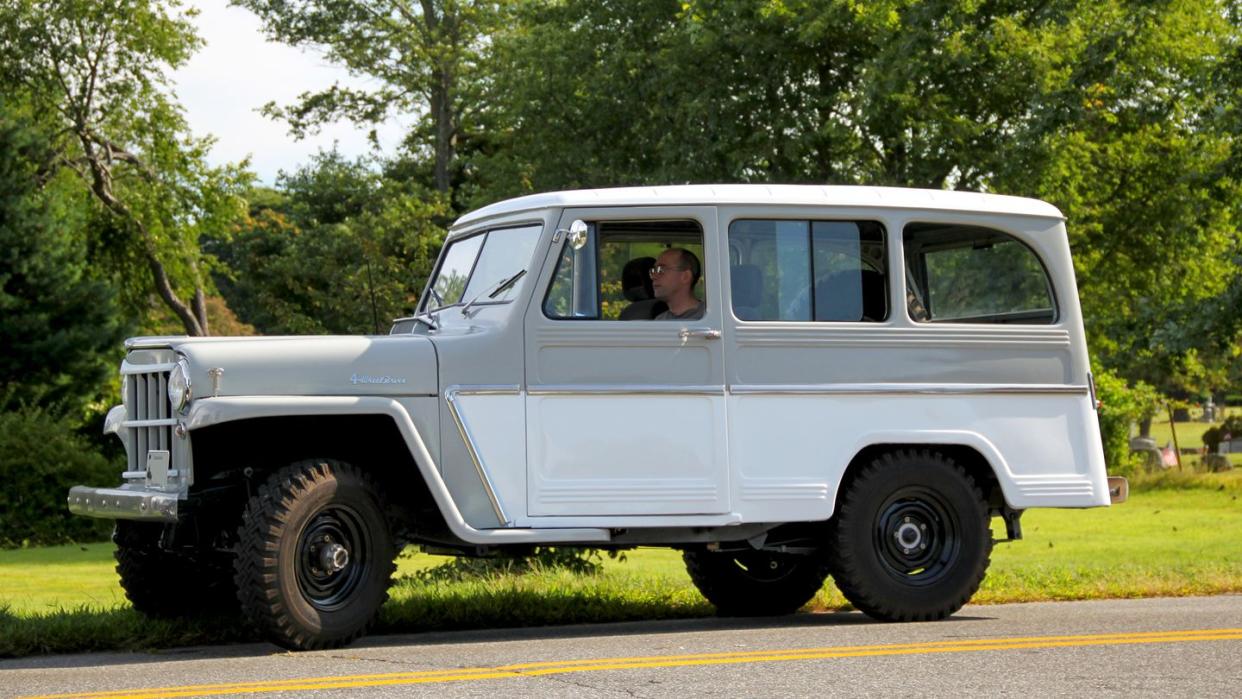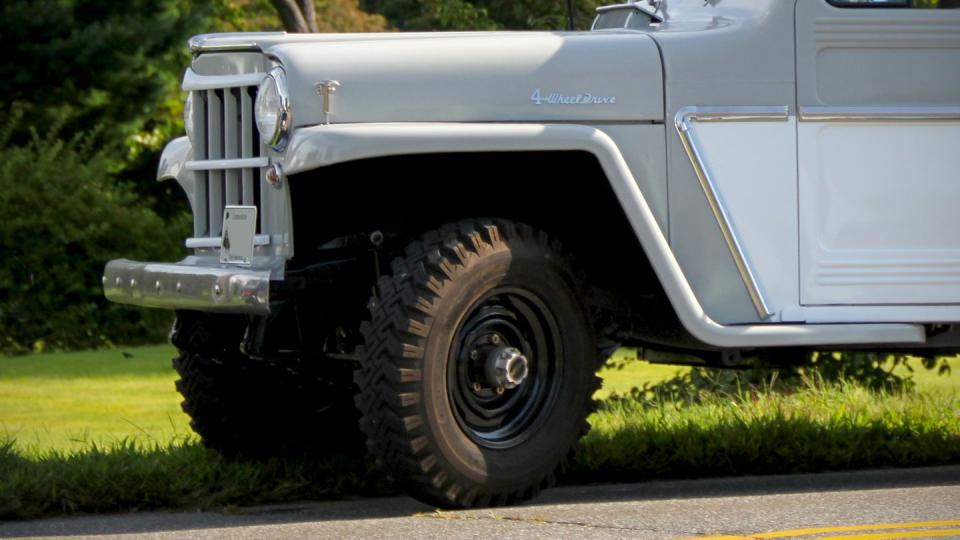Vintage Willys Jeep Wagon Spotted on the Street

A Jeep Grand Wagoneer with seating for eight won't surprise anyone these days, except with its fully optioned price tag perhaps, but a four-wheel-drive family vehicle was still a relatively fresh concept in the post-war years. And this Willys Wagon we spotted on the street is considered the direct ancestor of the model that became the Wagoneer in the mid 1960s.
The model itself was introduced in 1946, styled by Brooks Stevens, just as Willys-Overland aimed to turn its wartime runabout into something a little more domesticated. But it wasn't a four-wheel-drive machine from the start. The model actually debuted solely with rear-wheel drive and was powered by the Go Devil straight-four engine.
A 4WD version arrived in 1949, adding extra capability to a vehicle that was now marketed quite directly to suburbanites.
While the Willys Station Wagon debuted with four-cylinder engines in 1946, followed by the six-cylinder Lightning in 1948, perhaps the most famous engine available in these was named Hurricane, available in several versions from 1950 onward.
The engine lineup through the entire production run was quite varied and evolutionary, with the Super Hurricane arriving in 1954 and offering a bit more power than the 90-hp Hurricane six-cylinder.
"The 115-HP Super Hurricane is a tough, high-torque, low-RPM engine of simple, low maintenance design," Willys brochures of the time said. "Aluminum alloy pistons, new heavy-duty bearings, positive exhaust valve rotation, simichrome exhaust and intake valves give you quiet, dependable power and long engine life."
The Willys model also promised "feather-light steering," though we suspect this claim might stand up only in comparison to other 4x4s of the period, and the drivers of 2024 may not all agree if they had to try it today.
The interior offered a fold-away front passenger seat, allowing second row ingress and egress, with the second row also being removable in favor of extra cargo space. The corrugated steel floor could be sponged clear or even washed with a garden hose, making the wagon a popular vehicle for the farm as well.
A few upscale options like white side walls and chrome wheel trim were also offered, with Willys keen to make the model appear more like the family cars of the day. The Station Sedan version, meanwhile, offered a basket-weave trim for the sides.

In 1953 Kaiser took over Willys, bringing several new versions to the lineup, along with more mechanical updates.
The wagon seen in our photos hails from 1962, toward the end of the run. The Station Wagon was eventually being replaced by the Jeep Wagoneer, which was also styled by Brooks Stevens. 1965 would end up being the last model year for the Station Wagon in the US, at least on paper as production stopped before that year.
But the basic model would go on to have a much longer life overseas, with production in Argentina and Brazil stretching into the 1970s and just barely into the 1980s.
Overall, it's rare to see an example that hasn't been turned into some kind of hot rod fever dream with modern wheels and tires, or hasn't had 50 pounds worth of additional chrome accessories from later years attached to "make it better."
Spotting this one in very original condition and a subdued color scheme was rare indeed.
What names from its past, if any, should Jeep bring back for a future model? Let us know in the comments below.

